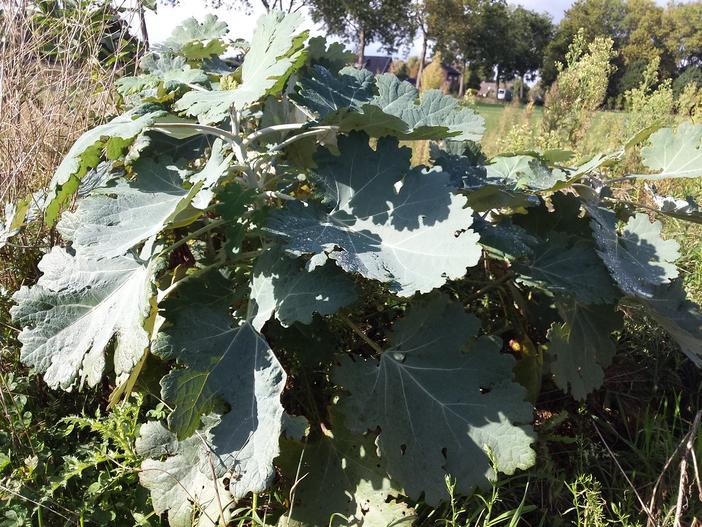Plume-Poppy
(Macleaya microcarpa)
Plume-Poppy (Macleaya microcarpa)
/
/

De Tuin
CC0 1.0
Image By:
De Tuin
Recorded By:
Copyright:
CC0 1.0
Copyright Notice:
Photo by: De Tuin | License Type: CC0 1.0 | License URL: https://creativecommons.org/publicdomain/zero/1.0/ | Uploader: De Tuin | Publisher: Flickr













Estimated Native Range
Summary
Macleaya microcarpa, commonly known as Plume-Poppy, is a deciduous perennial herb native to open woodlands and grassy slopes in Central China. This species, part of the poppy family, can reach up to 2 meters (7 feet) tall and 1 meter (3 feet) or more in width. It has distinctive grey-green felted leaves and bears loose panicles of small, buff-colored flowers in midsummer, which are moderately showy. The Plume-Poppy is an imposing architectural plant that adds a bold texture to garden designs.
The Plume-Poppy is valued for its striking foliage and structural form, making it a favorite for creating visual interest in borders and as a background plant in garden compositions. It is also appreciated for its low maintenance requirements, as it can thrive in a range of soil conditions, from moderately fertile to poor soils, as long as they are well-drained. It prefers full sun to part shade and requires moderate watering. However, gardeners should be cautious as it self-seeds readily, which can lead to it becoming a nuisance by spreading beyond its intended area. Additionally, its potential invasiveness should be considered before planting, as it can escape cultivation and establish in natural areas outside its native range. It is also popular for flower arranging due to its unique appearance.CC BY-SA 4.0
The Plume-Poppy is valued for its striking foliage and structural form, making it a favorite for creating visual interest in borders and as a background plant in garden compositions. It is also appreciated for its low maintenance requirements, as it can thrive in a range of soil conditions, from moderately fertile to poor soils, as long as they are well-drained. It prefers full sun to part shade and requires moderate watering. However, gardeners should be cautious as it self-seeds readily, which can lead to it becoming a nuisance by spreading beyond its intended area. Additionally, its potential invasiveness should be considered before planting, as it can escape cultivation and establish in natural areas outside its native range. It is also popular for flower arranging due to its unique appearance.CC BY-SA 4.0
Plant Description
- Plant Type: Herb
- Height: 6-8 feet
- Width: 2-4 feet
- Growth Rate: Moderate
- Flower Color: Brown, Pink
- Flowering Season: Summer, Fall
- Leaf Retention: Deciduous
Growth Requirements
- Sun: Full Sun
- Water: Medium
- Drainage: Medium
Common Uses
Deer Resistant, Drought Tolerant, Low Maintenance
Natural Habitat
Open woodlands and grassy slopes in Central China
Other Names
Common Names: Tree Celandine , Ockerfarbiger Fiedermohn , Kinesisk Vippvallmo
Scientific Names: Macleaya microcarpa , Bocconia microcarpa
GBIF Accepted Name: Macleaya microcarpa (Maxim.) Fedde